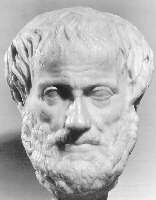Wednesday 2 January 2013
For Sarah, Part One
Posted by
Supertradmum
I promised a friend I would write on the Illative Sense in Newman with regard to my idea that poetry and other forms of art appeal directly to this sense. I am writing a longer piece on this and it was part of my dissertation which I have temporarily set aside until I get more funds to continue. Let me explain. For Newman, his Illative Sense is the part of the mind, or even the soul, which bridges the logical, ratio, ability to understand God and religious principles, especially absolute truths and commitment to that truth, or assent to that truth. He describes this ability, or sense as the leap of belief, when the rational part of us is incapable of fully apprehending basic truths about God. He does not believe that the rational ability of man can apprehend or define God, the great effort of Anselm and Aquinas, but rather that there is in us this bridge which leads to the "yes" of faith. I have been thinking for years that art and artists have this Illative Sense built into their psyches and into the process of art. Why do I think this? In the process of art, one works with the material of one's art. If it is painting, the tools, the paint, canvas or whatever and the creative process are necessary for the art to occur. But, in the aesthetic process, there is a mysterious interplay of personal inspiration, the very word indicating a movement of the spirit of a person, and the materials. And, in a true artist, not a commercial artist or a propagandist, the pursuit of Truth and Beauty allow the artist to enter a transformational creative state, which is usually labelled the aesthetic sense.
However, there is something else happening here, which is the mysterious bridge between the soul and the mind of the artist, a bridge between the spiritual realities which the artist tries to absorb and concretely communicate and the spiritual sense. I think that Newman's Illative Sense may be part of this bridge. In other words, the very thing which leads us to a higher form of thinking, regarding religion, that part of being human which demands an absolute commitment to Truth and Beauty (and if an artist denies or departs from this he is a charlatan and fake), he is denying the real source of the inspiration. To be inspired is what the Greeks understood as the appropriation of the daemon, or the taking over of the soul by some mysterious muse or muses, who almost made the artist into a superman, a person who transcends his own self in order to create. This is called poesis and mimesis. Poesis properly only belongs to God, as it is creating ex nihilo and mimesis is the creating from the mirror of nature. We can only copy and our art works are a pale reflection of all Beauty and Truth. Aristotle, in Nicomachean Ethics, one of my favorite books, uses the term phronesis to mean practical wisdom. Some critics have seen this as prudence and others as merely wisdom. Prudence is the virtue we Catholics receive in Confirmation, if we really receive that sacrament in grace and is the application of the mind and soul of wisdom to ever day events and discernment. However, in the use of the rational mind, we make such leaps immediately or with due process of rationalization, but in areas of religious impetus, with what Newman calls the Illative Sense. The artist more than other people by nature, by gift and perhaps by temperament, uses his intellect with the added gifts of prudence and inspiration. I think this movement of the spirit and the Spirit may be either the same or overlap in the Illative Sense.
The movement of the artistic process must include a spiritual awareness which bridges the rational with the affirmation of belief. One who is an artist knows, just knows, when something is right and true about his art. If it is not true, one starts over again, working both with the material and the inspiration. But, the capacity to sense what is true, good and beautiful may rest in this Illative Sense, the same thing which brings one to accept a truth of the Church or an attribute of God with which one is struggling.
To be continued... copyright 2013

